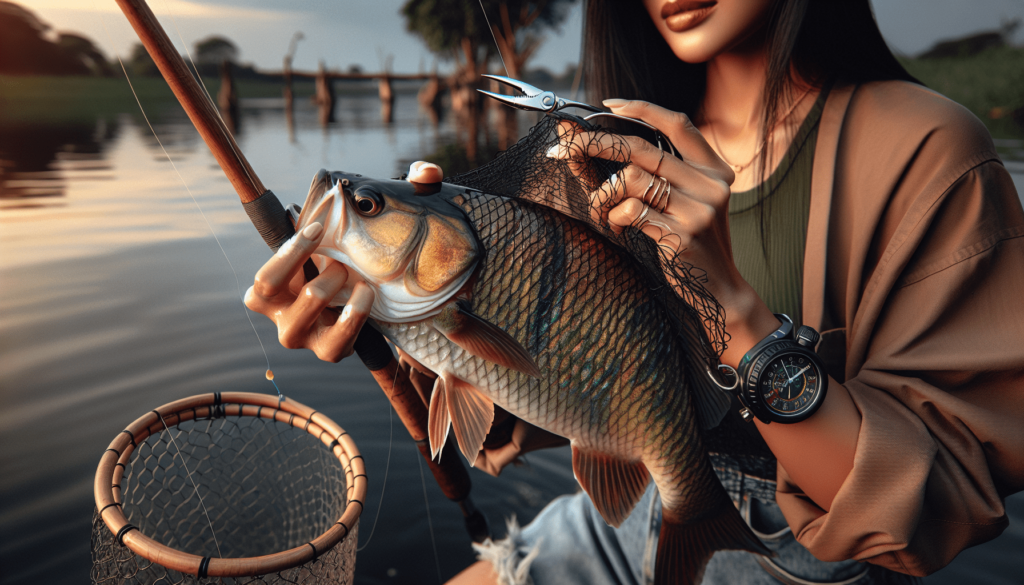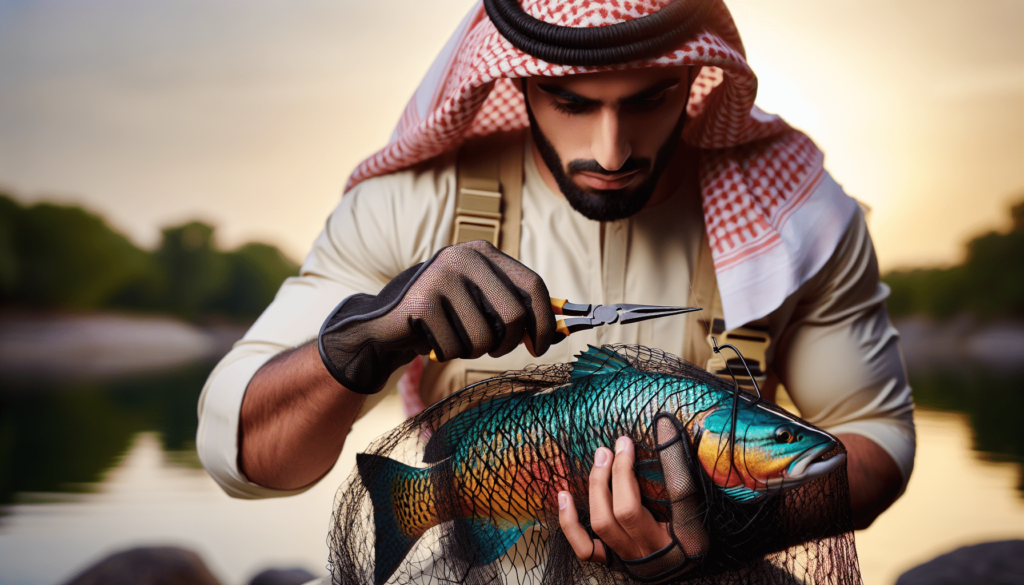
Are you ready to reel in that big catch but not quite sure how to properly land a fish once it’s on the line? Don’t worry, we’ve got you covered. Landing a fish is a crucial part of the angling process, and with the right technique, you can ensure a successful and stress-free catch. By following these simple tips and tricks, you’ll be a master at landing fish in no time. How do I properly land a fish?
Understanding the Basics of Landing a Fish
Landing a fish is an essential skill for any angler, whether you are a beginner or a seasoned pro. It is the final step in the thrill of the catch, and doing it properly ensures the safety of the fish and increases the chances of successfully landing it. In this article, we will explore the various techniques and tips to help you properly land a fish and make the most of your fishing experience.
Importance of Properly Landing a Fish
Properly landing a fish is crucial for both the fish’s well-being and your own satisfaction and safety. Mishandling a fish can cause unnecessary harm and stress, potentially leading to injuries or even death. By learning the proper techniques and practices for landing a fish, you can increase the chances of a successful catch while also ensuring the fish’s survival when released back into the water.

Equipment Needed for Landing a Fish
Before you head out for a day of fishing, it’s essential to have the right equipment on hand to properly land a fish. Here are some essential pieces of equipment you’ll need:
Fishing Rod and Reel
A high-quality fishing rod and reel are essential for successfully landing a fish. Choose a rod and reel that are appropriate for the type of fish you are targeting and the fishing conditions. Make sure the reel is properly spooled with the right line weight to handle the fish you are after.
Landing Net
A landing net is a crucial tool for safely landing a fish, especially if you are practicing catch and release fishing. Choose a landing net with a soft mesh material that is gentle on the fish’s scales and fins. Make sure the net is big enough to handle the size of the fish you are targeting.
Fishing Line
Having the right fishing line is critical for landing a fish successfully. Choose a strong and durable fishing line that can handle the weight and fighting power of the fish you are targeting. Make sure the line is properly spooled on your reel and check for any signs of wear or damage before you start fishing.

Techniques for Landing a Fish
Once you have the right equipment in hand, it’s time to put your skills to the test and land that elusive fish. Here are some techniques to help you properly land a fish:
Setting the Hook
One of the most critical steps in landing a fish is setting the hook properly. When you feel a bite, resist the urge to immediately reel in the fish. Instead, give the fish a moment to fully take the bait before setting the hook with a quick, firm motion. This will help ensure that the hook is securely embedded in the fish’s mouth, increasing your chances of landing it successfully.
Playing the Fish
After setting the hook, it’s time to play the fish and let it tire itself out. Keep your rod tip up and maintain a steady pressure on the fish to prevent it from spitting out the hook or breaking the line. Use a smooth and consistent reeling motion to guide the fish towards you, while remaining patient and allowing the fish to make its runs and dives.
Using the Landing Net
Once the fish is within reach, it’s time to use the landing net to safely bring it on board. Hold the landing net in one hand and guide the fish towards it with your rod and reel. When the fish is close enough, scoop it up gently with the landing net, making sure to support its body and avoid causing any harm. Lift the fish out of the water and onto the boat or shore, being careful not to drop or mishandle it in the process.

Tips for Properly Handling a Fish
Properly handling a fish is essential for its well-being and survival, especially if you plan on releasing it back into the water. Here are some tips to help you handle a fish properly:
Wet Your Hands
Before handling a fish, wet your hands to prevent removing its protective slime layer, which can lead to infections or injuries. This will also help reduce stress and minimize any potential harm to the fish’s skin and scales.
Hold the Fish Gently
When handling a fish, it’s essential to support its body and avoid putting pressure on its vital organs. Hold the fish gently but securely, making sure to avoid squeezing or mishandling it. This will help reduce stress and potential injuries to the fish, increasing its chances of survival when released.
Remove the Hook Carefully
If you plan on releasing the fish, it’s crucial to remove the hook carefully to minimize any harm. Use a pair of hemostats or fishing pliers to gently and swiftly remove the hook from the fish’s mouth, taking care not to injure the fish or yourself in the process. If the hook is deeply embedded, consider cutting the line close to the hook and leaving it in the fish, as it will eventually dissolve or be expelled.

Catch and Release Best Practices
Catch and release fishing is a popular practice among anglers who want to preserve fish populations and ensure the sustainability of fisheries. Here are some best practices for catch and release fishing to help you properly handle and release a fish:
Keep the Fish in the Water
When releasing a fish, it’s essential to keep it in the water as much as possible to minimize stress and ensure its survival. Avoid lifting the fish out of the water for an extended period and keep it submerged while removing the hook and preparing it for release.
Revive the Fish
If the fish appears tired or exhausted after being caught, take the time to revive it before releasing it back into the water. Hold the fish upright in the water and gently move it back and forth to help oxygenate its gills and restore its energy. Once the fish is active and ready to swim away, release it gently and watch as it swims back to its natural habitat.
Follow Local Regulations
Before practicing catch and release fishing, make sure to familiarize yourself with local fishing regulations and guidelines. Some areas may have specific rules or restrictions regarding catch and release fishing, such as the use of barbless hooks or certain catch limits. By following these regulations, you can help protect fish populations and preserve the natural environment for future generations.

Conclusion
Properly landing a fish is an essential skill for any angler, whether you are a beginner or a seasoned pro. By understanding the basics of landing a fish, having the right equipment on hand, and following proper techniques and best practices, you can increase your chances of successfully landing a fish and ensuring its well-being and survival. Remember to handle the fish gently, follow catch and release best practices, and respect local fishing regulations to make the most of your fishing experience and contribute to the conservation of fish populations. Happy fishing!